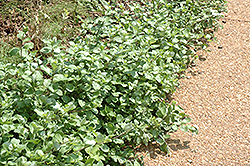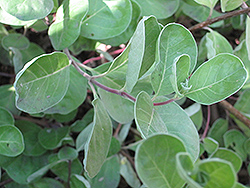It's all about ...
plants

Height: 4 feet
Spread: 10 feet
Sunlight:
![]()
Hardiness Zone: 7a
Other Names: Pohinahina
Description:
A seashore variety that is low growing with a sprawling habit, and is very fast growing and produces runners that root at nodes; pretty blue-purple flowers clusters in summer; can be cut back each spring, as it flowers on new wood and regrows vigorously
Ornamental Features
Beach Vitex has panicles of blue flowers with purple overtones rising above the foliage from mid to late summer. Its palmate leaves remain grayish green in colour with curious silver undersides throughout the season.
Landscape Attributes
Beach Vitex is an open multi-stemmed perennial with a ground-hugging habit of growth. Its relatively fine texture sets it apart from other garden plants with less refined foliage.
This is a high maintenance plant that will require regular care and upkeep, and is best cut back to the ground in late winter before active growth resumes. Gardeners should be aware of the following characteristic(s) that may warrant special consideration;
- Spreading
- Suckering
- Invasive
Beach Vitex is recommended for the following landscape applications;
- General Garden Use
- Groundcover
Planting & Growing
Beach Vitex will grow to be about 4 feet tall at maturity, with a spread of 10 feet. It tends to be leggy, with a typical clearance of 2 feet from the ground, and should be underplanted with lower-growing perennials. Although it is technically a woody plant, this fast-growing plant can be expected to behave as a perennial in our climate if planted outdoors over the winter, usually regrowing from its base (crown) the following year. As such, gardeners should take into consideration that it will perform differently than it would in its native habitat.
This plant should only be grown in full sunlight. It is very adaptable to both dry and moist locations, and should do just fine under typical garden conditions. It is not particular as to soil pH, but grows best in sandy soils, and is able to handle environmental salt. It is highly tolerant of urban pollution and will even thrive in inner city environments, and will benefit from being planted in a relatively sheltered location. This species is not originally from North America. It can be propagated by cuttings.
This plant is not reliably hardy in our region, and certain restrictions may apply; contact the store for more information.

